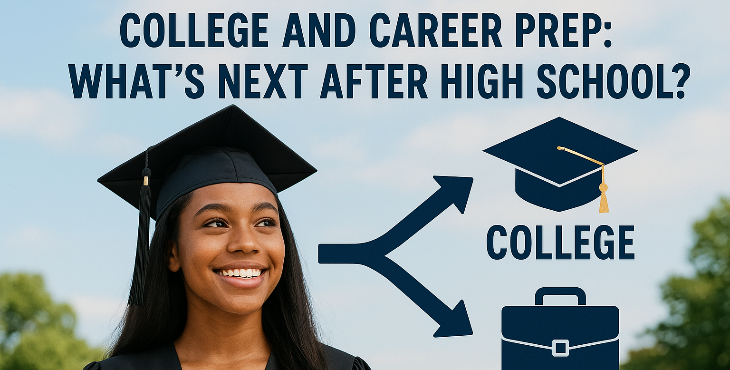
- May 02, 2025
College and Career Prep: What’s Next After High School?
Graduation is around the corner—or maybe it's still a few years away—but one question always looms large: What’s next after high school? Whether you're planning to attend college, dive straight into a career, or explore other opportunities, the choices can feel overwhelming. The good news? There’s no single “right” path. The key is preparing now so you can make informed, confident decisions when the time comes.
Step 1: Know Yourself
Before you start filling out college applications or building a résumé, take time to reflect:
- What are your strengths and interests? Are you passionate about science, writing, helping others, or building things?
- What subjects or activities excite you the most?
- Do you prefer hands-on work, creative projects, or analytical challenges?
Understanding what motivates and energizes you can help guide your next steps—whether it’s choosing a college major, trade program, or job field.
Step 2: Explore Your Options
Here are the most common paths students take after high school:
1. College or University
A traditional route for many, college offers opportunities for academic growth, personal development, and future career advancement.
- Associate’s degree (2 years) – Often offered at community colleges and great for those looking to enter the workforce quickly or transfer to a 4-year school.
- Bachelor’s degree (4 years) – Offers more in-depth education and access to broader career fields.
- Scholarships and financial aid – Don’t let cost stop you; many resources exist to help.
2. Trade or Vocational School
Interested in skilled trades like plumbing, electrical work, automotive technology, cosmetology, or culinary arts? Trade schools offer focused, hands-on training and typically take less time to complete than a traditional college.
3. Workforce
Some students choose to enter the workforce right after high school. Gaining real-world experience early on can help you discover what you like—or don’t like—and some employers even offer tuition assistance for continued education.
4. Military Service
The military can provide valuable training, structure, education benefits, and a sense of purpose. It’s a big commitment, so make sure you understand what it involves.
5. Gap Year
Taking a year off to travel, volunteer, or work before committing to college or a career can be a great way to gain perspective and maturity.
Step 3: Take Action Early
1. Start Researching
- Visit college websites and request info packets.
- Shadow someone in a career that interests you.
- Attend career fairs and campus tours.
- Use tools like Naviance, CareerOneStop, or the Occupational Outlook Handbook to explore job trends and salaries.
2. Build Your Résumé
Start now by:
- Volunteering
- Taking on leadership roles in clubs or sports
- Working part-time
- Enrolling in AP, IB, or dual-enrollment classes if available
3. Talk to People
- Speak with school counselors, teachers, family members, and professionals in fields you're curious about.
- Ask about their own career paths and what advice they have for you.
Step 4: Stay Open, Stay Flexible
Your interests and goals may change—and that’s okay. Few people follow a straight-line path to success. Life after high school is full of opportunities and learning experiences, whether in a classroom, workplace, or somewhere in between.
Final Thoughts
Planning your future isn’t about having everything figured out. It’s about staying curious, being open to change, and preparing as best you can. Whether you're college-bound, career-focused, or still figuring it out, take the time to ask questions, do your research, and believe in your ability to grow.
High school is just the beginning. Your future starts now.


